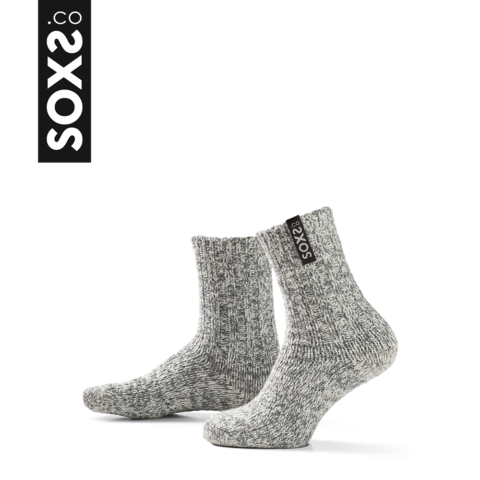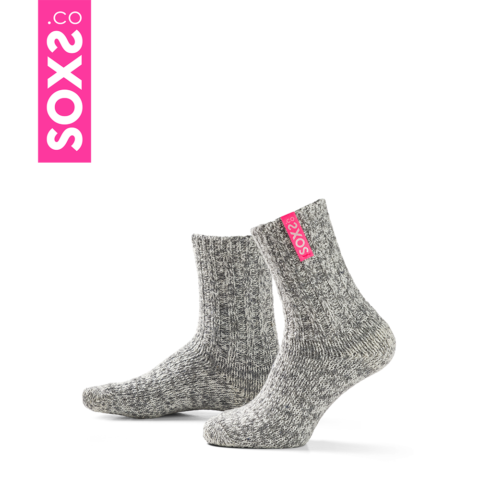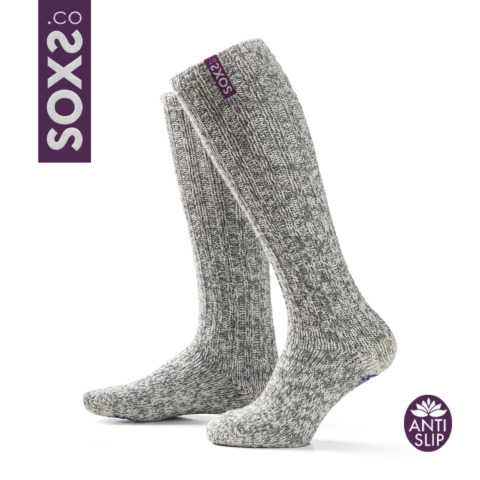Order before 4 p.m. and get same day shipping!
100 % itch free wear comfort!
Warning: SOXS are addicting!
Sheep shearing plays an important role in both animal welfare and sustainable farming practices. At SOXS, we believe in exploring how traditional practices like sheep shearing can align with modern values of sustainability and ethical treatment of animals. Let’s look at how this process works and why it matters for both the sheep and our environment.
Sheep shearing is the careful removal of wool from sheep, typically performed once a year during spring. This process is essential for sheep health as it prevents overheating and reduces the risk of parasitic infections during warmer months. Professional shearing requires skill and precision to ensure the comfort and safety of the animals.
Beyond animal welfare, shearing provides wool – a natural, renewable resource used in various products including our sustainable wool socks. When done ethically, sheep shearing supports both the well-being of the animals and environmentally responsible textile production.
Proper animal welfare is at the heart of ethical sheep shearing. The focus remains on minimizing stress and ensuring sheep are treated with respect throughout the process. Responsible shearing is a necessary part of sheep care rather than exploitation, as unsheared wool can cause significant health problems for the animals.
When performed with care, shearing maintains sheep health while providing a sustainable material. This balance between animal welfare and resource use represents a thoughtful approach to farming that respects both the animals and our environment.
Regular shearing is vital for sheep health. Without it, sheep can suffer from overheating and flystrike, a painful condition caused by parasites. Keeping their fleece at a manageable length improves their comfort and quality of life, especially during warmer seasons.
From an environmental perspective, wool offers significant advantages as a material. It’s naturally biodegradable and recyclable, making our wool socks a more sustainable choice than synthetic alternatives. By choosing wool products from responsible sources, you support farming practices that work with natural cycles rather than against them.
Ethical sheep shearing relies on several important practices. Skilled shearers use proper techniques and modern equipment designed to be gentle on the animals. The sheep are handled calmly and with care, reducing stress throughout the process.
Timing is also crucial – shearing should align with the sheep’s natural cycles and local environmental conditions. At SOXS, we source our wool from suppliers who follow these best practices, ensuring the process respects the animals while producing the quality wool for our warm socks.
Many people believe sheep shearing is unnecessary or harmful to the animals. In reality, domestic sheep need shearing for their health and comfort, as they’ve been bred over generations to produce wool continuously. Without shearing, sheep would suffer from excessive wool growth.
Another misconception is that all wool production is exploitative. By learning about ethical shearing practices, you can make informed choices about products like our sustainable wool socks, supporting operations that prioritize animal welfare alongside quality production.
Promoting ethical wool production requires transparency and education. By highlighting both the welfare of the animals and the environmental benefits of natural wool, we can develop a more complete understanding of sustainable textile production.
At SOXS, we’re committed to sourcing wool responsibly for our products. Our wool socks are made with care for people, animals, and the planet, offering you comfort with the confidence of conscious choices.
Ethical sheep shearing represents an important balance between animal care and sustainable material production. When done properly, it ensures sheep remain healthy while contributing to eco-friendly products like our warm wool socks.
We believe in making choices that respect both animals and our environment. By supporting responsible wool production, you’re helping create a more sustainable future for textile manufacturing.
Interested in experiencing the comfort and sustainability of properly sourced wool? Discover our collection of wool socks at soxs.co and feel the difference that ethical production makes.

Calf height

Calf height

Knee height